Seiko is one of the most popular watchmakers in the world today and for a good reason – their watches ( produced entirely in-house) are known for their incredible quality and attention to detail. But…where are they made? Japan? China? The Outer Hebrides?
In this article, you’ll find out the answer to that question!
All information contained in this article also applies to Lorus and Pulsar watches.
Read: The Best Rolex Submariner Homage Watches to Buy RIGHT NOW
Seiko Watches Without a Country of Origin Stamped on their Dials
Seiko watches without a country of origin stamped on the dial (even on the outer side of the watch case back and in many cases, movement) are those that’re completely assembled and tested outside Japan – usually in China, Malaysia and Singapore. This comes at no surprise because Seiko, in order to save some shekels, produces a significant part of its low and mid-ranges watches (as well as other products like printers and communication equipment, for example) in countries where the cost of labor is relative low.
The main reason why many low and mid-ranges Seiko watches don’t stamped the country of origin on their dials is due to the import requirements of the countries where the watch is intended to be sold – it has nothing to do with some “trade secrets ” involving a secret cabal of lizard people from an evil parallel dimension, I asssure you. Let ol’ Leon explain things more clearly in the simplest way possible, OK 🙂 ?
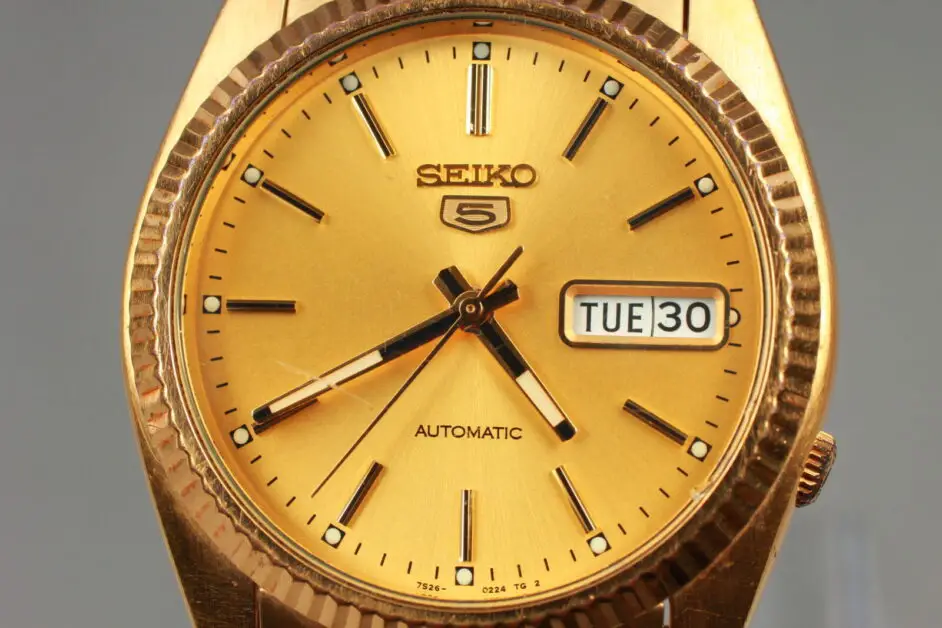
Believe it or not, many countries (most European, Asian and African), don’t have (or if they do, don’t enforce) laws that require EVERY article of foreign origin that’s intended to be sold on their territory be clearly marked with the name of their country of origin. Because of this, Seiko watches that’re intended for sale in those countries (like the SNX94 pictured) will not have a country of origin (China, Singapore, Malaysia) stamped on their dials, case backs or movements (as seen in the image below) – the only place where it’ll likely be is on the inner side of the case back.
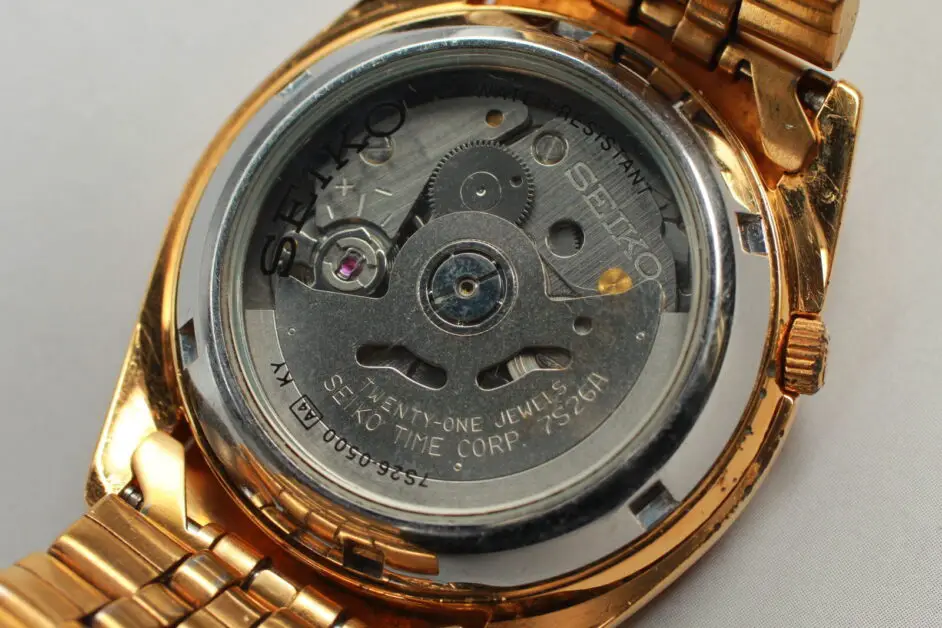
On the other hand, some countries (like the US and Japan, for example) require that EVERY article of foreign origin that’s intended to be sold on their territory be clearly marked with the name of their country of origin – the aforementioned SNX94 in the above two pictures, for example, wasn’t intended for sale in the US/Japan since it doesn’t have its country of origin stamped on the dial or the outer side of the case back. Thus, in order for Seiko to legally import and sell its watches that’re completely made outside Japan to those countries, it must stamp the country of their origin or, to be more precise, the country of origin of their movement (in US and Japan, the origin of the movement alone determines the origin of the watch). In the picture below, you can see a Seiko SKX781 “Orange Monster” whose movement was made in Malaysia (and which was probably cased elsewhere).
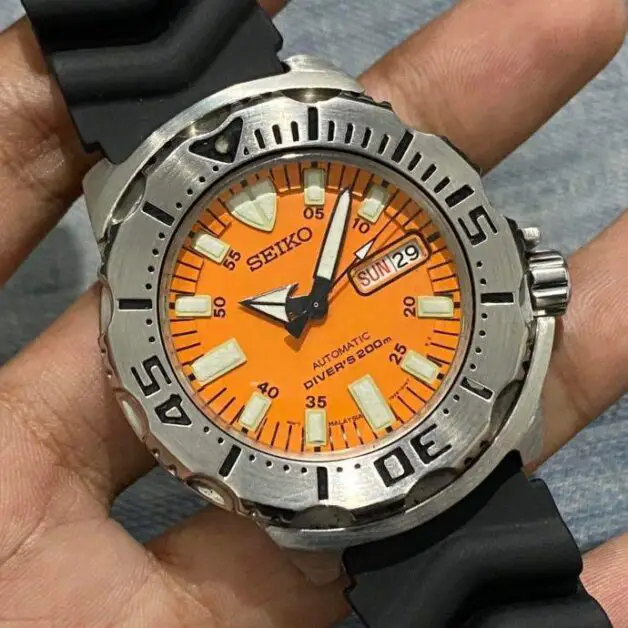
Read: THE BEST Men’s Dive Watches Under $100 you Can Buy
Seiko Watches with “Japan Movt” Stamped on Their Dials
Seiko watches with “Japan Movt (movement)” stamped on their dials (and on their case back in most cases) are the most common “type” (for a lack of a better word) of Seiko watches that you’ll find, most of them belonging to various low and mid-range collections. These watches are, just like those that don’t have a country of origin stamped on their dials, also made in China, Malaysia and Singapore and the only difference between these two “types” is that their movements are made in Japan (which are shipped to Seiko factories in China, Malaysia and Singapore where they’re tested and cased up). These watches are intended to be sold on the territory of countries where imported products must be clearly marked with the name of their country of origin (like the US).
Since all of this might be a lil’ bit confusing for someone who’s just starting with watches (don’t worry, we’ve all been there 🙂 ), I’ll try to explain everything through examples. As simply as possible, of course!
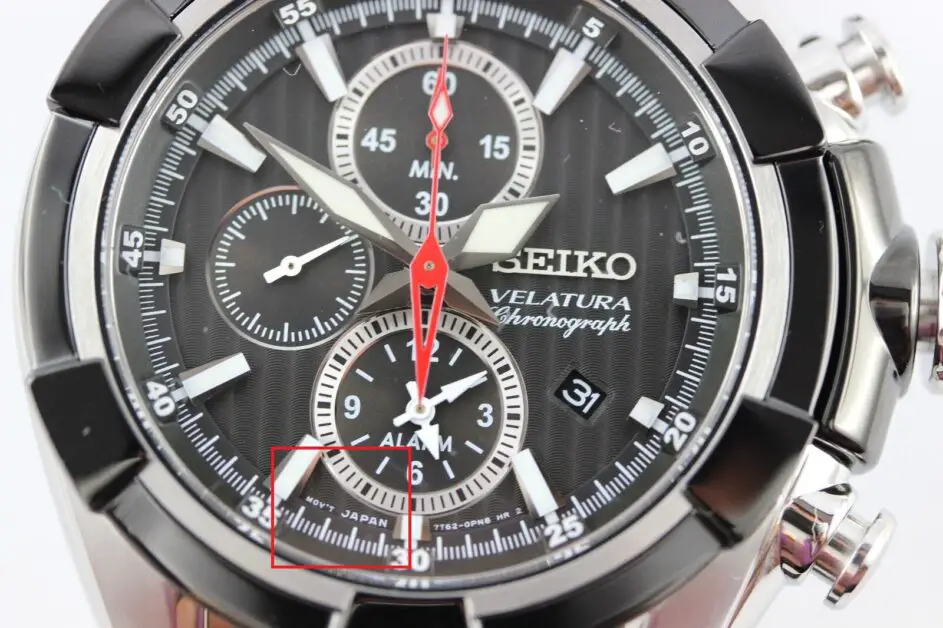
In the picture above you can see a Seiko SNAF39P3 from the mid-range Velatura collection. In the area marked with a red triangle, you’ll notice that its dial has “Japan Movt” stamped on it, which means that ONLY its movement is made in Japan, while the watch itself isn’t. In case you want to find out where it’s really made, the name of the country of origin will be located on the inner side of the watch back cover (as seen in the picture below).
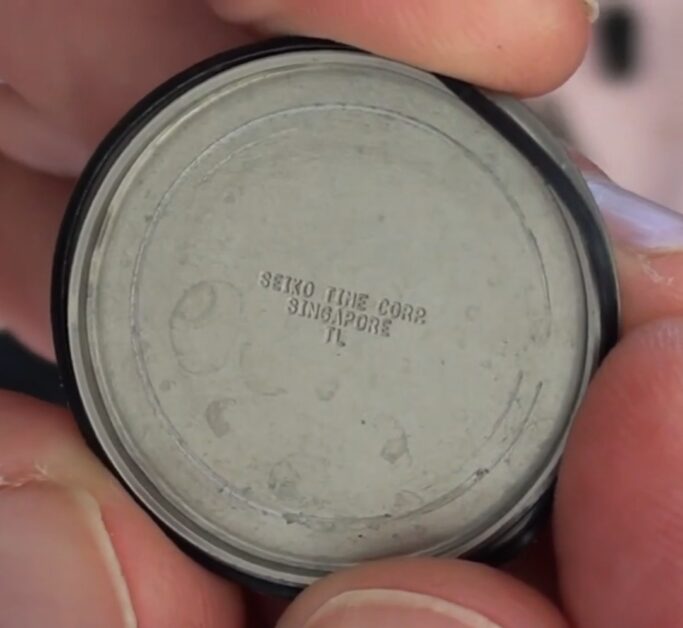
In some rare instances (usually on limited edition models, as seen in the picture below), the country where the watch was assembled (China) and the country of origin of the movement (Japan) will be located on the outer side of the watch cover.

Read: THE ULTIMATE Guide to Pulsar Watches (and Pulsar in General) IN HISTORY
Seiko Watches with “Japan” Stamped on Their Dials
Many people nowadays (not just enthusiasts) believe that Seiko (as well as Casio and Citizen) had outsourced all of their watch production overseas. Fortunately, that’s far from the truth – a small (but still significant) portion of their watches are still made in Japan, which is clearly indicated on their dials.
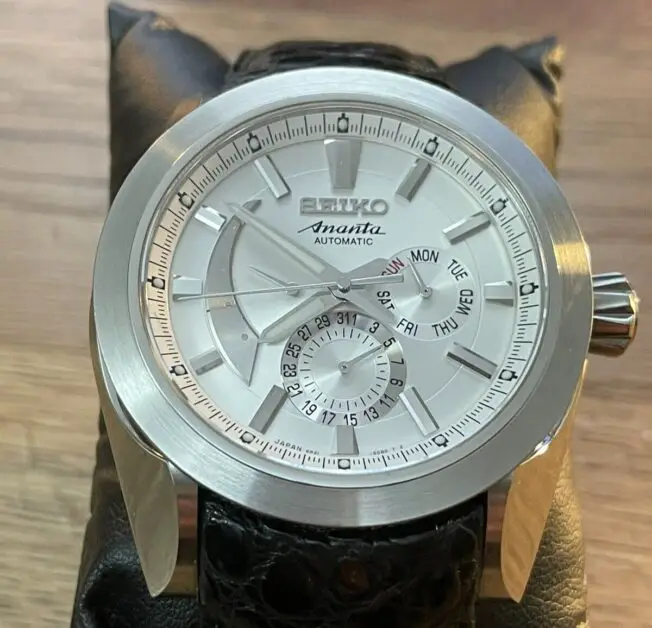
Most Seiko watches that are made in Japan usually belong to high-end models from the Seiko mainline (such as Astron, Ananta and LX ) and luxurious lines like the Grand Seiko, Credor and Galante lines. The facilities where they’re are assembled in (Shizukuishi and Shinshu Watch Studios) are staffed by some of the best Japanese horological meisters and are a sight to behold – visitors can discover and appreciate not only the brand’s history, but also the graceful symbiosis of those facilities with the natural world. Hopefully, I’ll be able to visit them one day because I really want to see the places where my Ananta (seen in the picture above) and Astron came from!
As far as Japan-made mid-range Seiko watches are concerned, most of them are models from the Seiko Prospex Land and Seiko Presage lines (like the one in the picture below) and are made in their factory in Shiojiri mostly by robots.
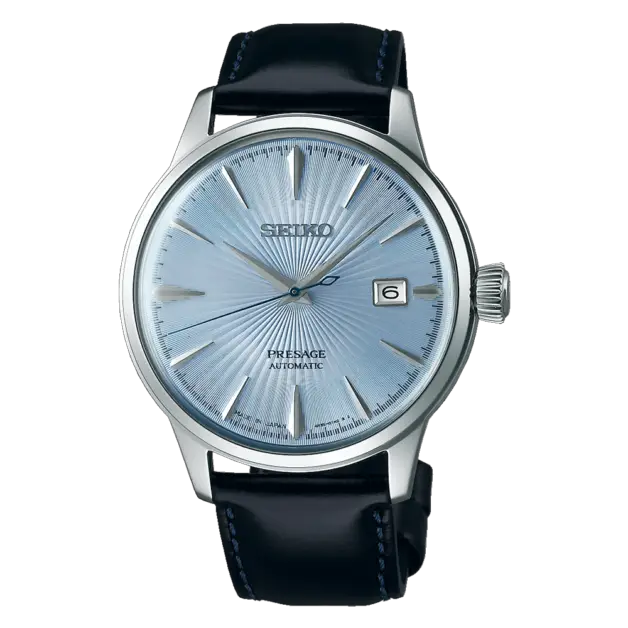
Before we move on to the next section, I’d like to dispel one the greatest myths about Seiko (and the Japanese watch industry in general) that a lot of people (even Seikoholics) believe in. According to that myth, in order for any product to be branded ‘(Made in) Japan’ (including watches), it either must be made in Japan OR in a Japanese owned (or contracted) factory overseas by Japanese quality control standards and under Japanese supervision by a Japanese owned firm. While the first part is correct (you’ll see why in a moment), the second part isn’t and in the next two paragraphs I’ll explain why in a way that won’t make your head explode!
According to the Article 68-3-4 of the Director-General’s Directive (contained in the Collection of Customs Directives of General Provisions for Tariff Affairs published by the Japan Tariff Association (JTA)), a place of origin is defined as the country in which the goods are wholly obtained or produced. Since that article is, in case of timepieces, ambiguous (from a technical standpoint, a watch movement is also a watch AND a component of a watch), the Trade Practices Division of the Japan Fair Trade Commission (JFTC), in the Article 14-4-1 of the Secretary General Notification, defines the place of origin of a timepiece (watch) as the country where its movement was assembled. Thus, according to Japanese (and, by the way, US law), any watch that’s powered by a Japanese-made movement is considered to be a Japanese product regardless whether it was made in Venezuela, Lesotho or Japan.
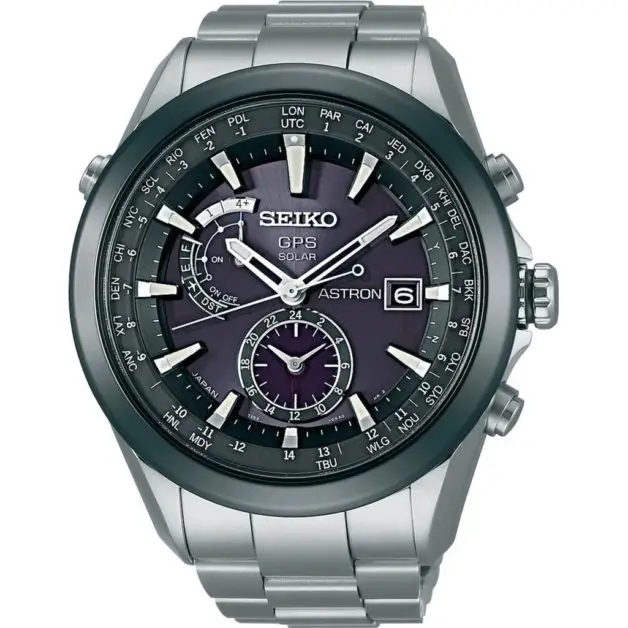
If you were a Venezuelan or Lesothian watchmaker, that law would be a gift from heaven – all you need to do is to fit the cheapest Miyota movement inside some cheap case and voilà, you have a “(Made in) Japan” that’s not actually made in Japan. On the other hand, if you were a Japanese watchmaker, that law is disastrous – not only you’d be unable to compete (the market would be inundated with Venezuelan and Lesothian “(Made in) Japan” watches), but the reputation of your country’s watchmaker industry (including, of course, yours) would be ruined since the quality of the vast majority of “(Made in) Japan” would be mediocre to poor! In order to prevent that from ever happening, the member companies of the Japan Clock & Watch Association (JCWA) will brand a watch with “(Made in) Japan” ONLY and ONLY IF the COMPLETE watch AND MOVEMENT assembly were performed in Japan either from domestic (Japanese) and/or imported components (many Japan-made watches have Chinese made cases). Some of the members of the JCWA are Casio, Citizen and of course, Seiko.
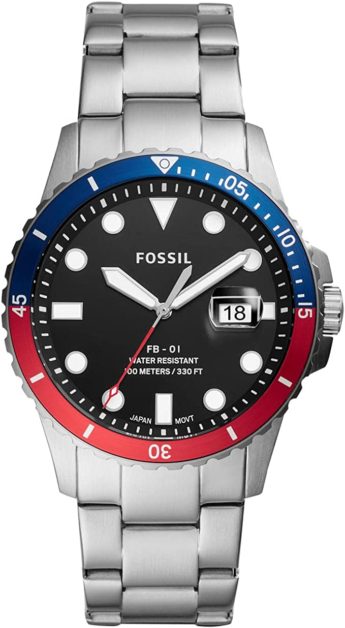
From what I can see, the JCWA standards became a standard practice worldwide – for example, a Fossil watch with a Japanese movement (seen in the picture above) that’s cased in China will have “Japan Movt” on its dial despite Fossil not being a member of the JCWA!
To conclude – only watches that have a Japanese made movement AND that’re assembled in Japan may be stamped with the illustrious “Made in Japan” imprint. – the rest can’t! In case you don’t believe me, ask Seiko, Citizen and the JCWA and they’ll confirm it (as well as everything that’s written in this article)!
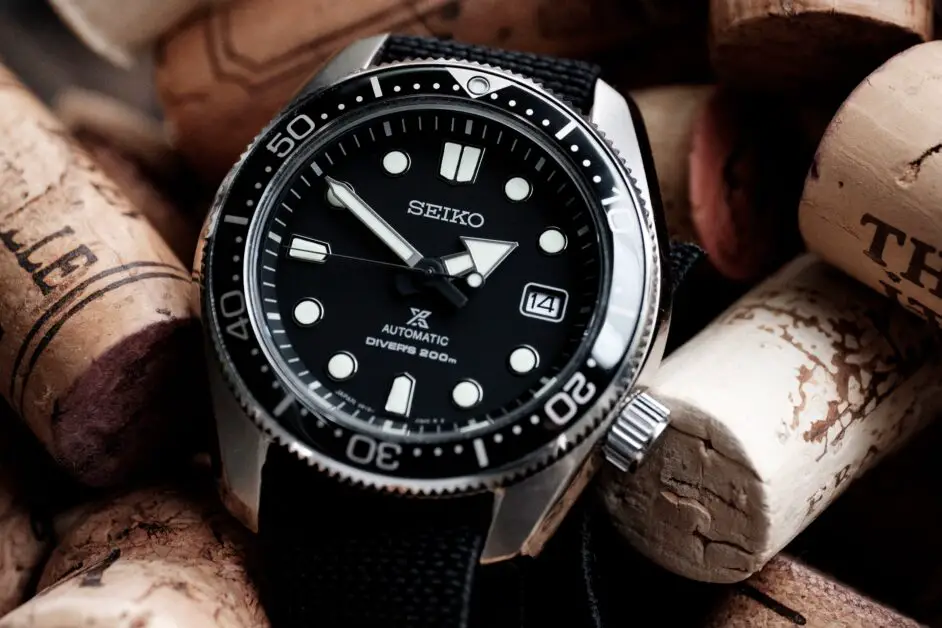
Seiko Watches with “Japan Made” Imprinted on the Dial
If you’ve ever looked for vintage and/or more affordable Seiko watches online, you’ll notice that a significant number will have “Japan Made” or “Japan” (with fonts several times bigger that usual) stamped on their HORRENDOUS looking dials. Those “Seiko” watches are known as “frankenwatches” because they, just like the Frankenstein monster, are made from salvaged bits and pieces from old or/and broken watches of various manufacturers (and, more often than not, home-made components as well). Amongst the Seikoholics, those watches are known as “Mumbai special” since most of them (like the ones in the pictures below) come from India.
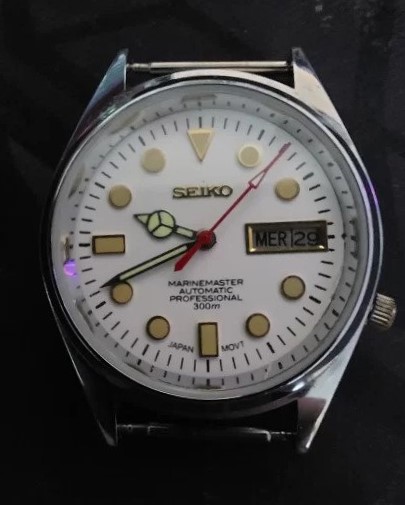
The main reason why “Mumbai specials” are hated more than Justin Bieber back in the day amongst watch enthusiasts (as well as any person who ever handled a watch – my mom and sister told me they would call some gentlemen in white coats that’ll take me to some nice, cozy place if I ever buy one) isn’t because of some hate we pampered Europeans have toward Indians, no! They’re hated because … :
(1) … of their ABYSMAL quality – the vast majority of “Mumbai specials” are made from whichever parts and “substitutes” the “watchmaker” had on hand at the time he began his next “project”, using “tools” and “manufacturing methods” that’d make the engineers at Seiko cringe (or, in worst case scenario, commit seppuku). Thus, it comes as no surprise that they contain rather unique parts not found in any Seiko watch, like human hair, dandruff or nail parts (limited editions might contain extras like sweat).
(2) … they keep HORRIBLE time since they’re either powered by some cheap Chinese-made automatic movement that, if we take into account the tools and “manufacturing methods” the “watchmaker” used to assemble it, certainly got damaged during fitting OR some ancient Japanese entry-level mechanical movement that wasn’t serviced since the end of Jimmy Carter’s mandate (and which, on top of that, certainly got damaged during casing if we take into account the tools and “manufacturing methods” the “watchmaker” used to assemble it).
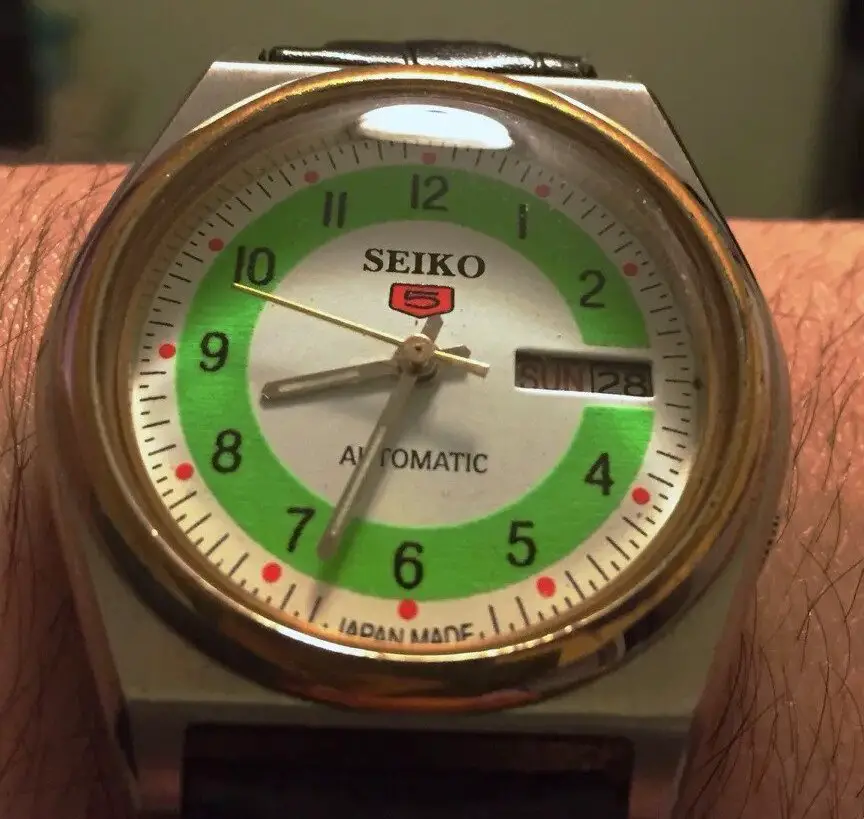
I could go on and on and on telling you reasons why to avoid buying “Mumbai specials” but I think you’ve heard and, unfortunately, seen enough so I’ll stop there. In short, do not buy ANY watch (mot just Seiko) that has “Japan Made” imprinted on the dial because those watches are junk!
Read: The BEST Women’s Dress Watches Under $100 You Can Buy
Are Seiko Watches REALLY Made in Japan?
Now that I’ve covered all four categories of Seiko watches (well…three, since “Mumbai specials” bearing the Seiko logo aren’t really Seiko), it’s time to answer the question whose answer you’ve been waiting for – are Seiko Watches REALLY Made in Japan?!
Based on the information and facts presented in this article, it can be concluded that a small (but still significant) portion of Seiko watches are made in Japan (which is clearly indicated on their dials), whereas the vast majority (which are made in Malaysia, China and Singapore) isn’t.

Frequently Asked Questions
#1 – What’s the Difference between Seiko K and J Series?
The main difference between the Seiko K and J Series are their intended markets – Seiko J’s are intended for sale in Asia while Seiko K’s are intended for sale in the rest of the world (Europe, US…). The K and J letters have nothing to do with their country of origin!
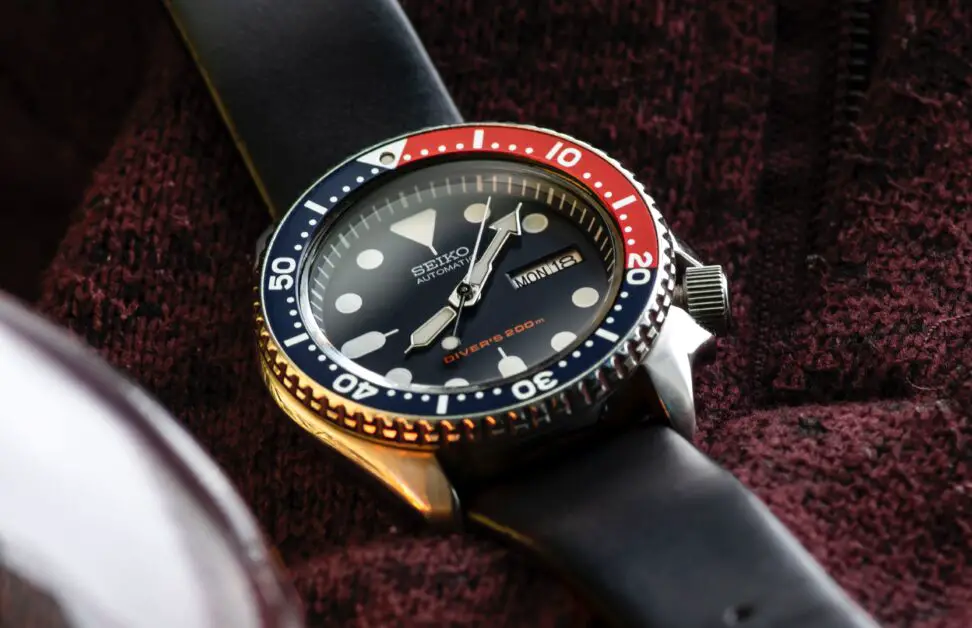
Read: How to Spot a FAKE Emporio Armani Watch
#2 – Are all Seiko JDM Watches Made in Japan?
No, all JDM (Japanese Domestic Market) watches aren’t necessarily made in Japan – most of them are, like in the rest of the world, imported from Malaysia, China and Singapore.
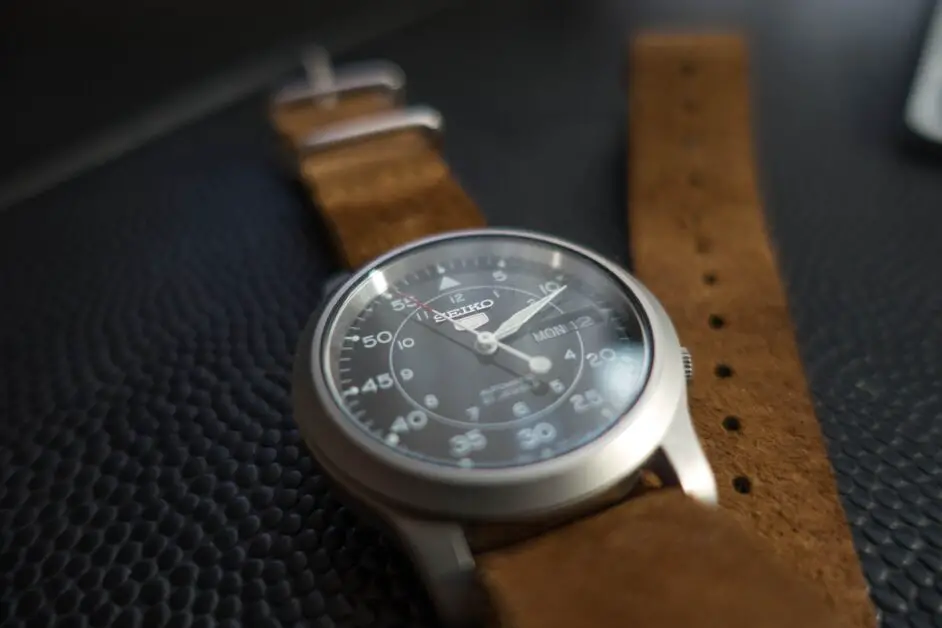
Thank you for reading. If you’ve liked this article and want to see more like them, bookmark this site and follow me on Instagram!
Until next time.
Your man,
-Leon

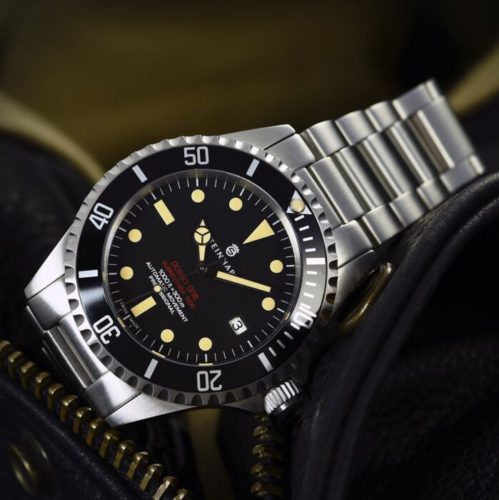
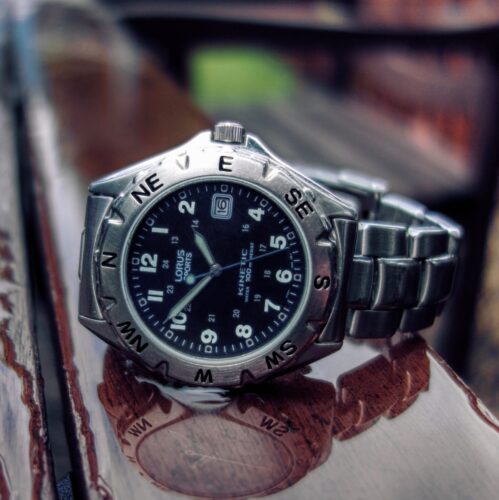
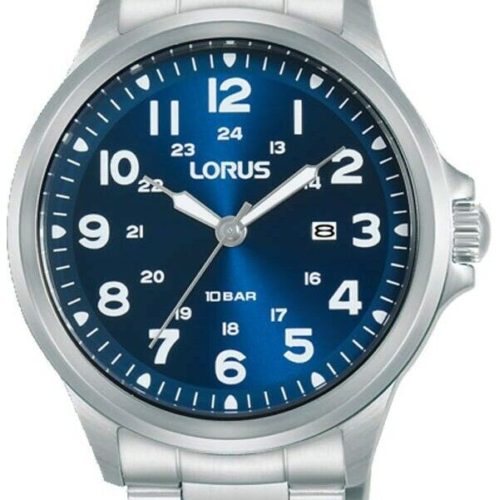
Pingback: THE ULTIMATE Guide to Pulsar Watches (and Pulsar in General) IN HISTORY – Findnolimits
Pingback: The BEST Women’s Dress Watches Under $100 (and SLIGHTLY over) You Can Buy in 2023 – Findnolimits
Pingback: THE BEST Women’s Dive Watches Under $100 (and SLIGHTLY over) you Can Buy in 2023 – Findnolimits
Pingback: The BEST Men’s Dress Watches Under $100 You Can Buy RIGHT NOW – Findnolimits
Pingback: THE BEST Men’s Dive Watches Under $100 you Can Buy – Findnolimits
Pingback: The Best Rolex Submariner Homage Watches to Buy RIGHT NOW – Findnolimits
Pingback: All About Seiko Astron GPS Solar Watches (and Hands-on Review) – Findnolimits